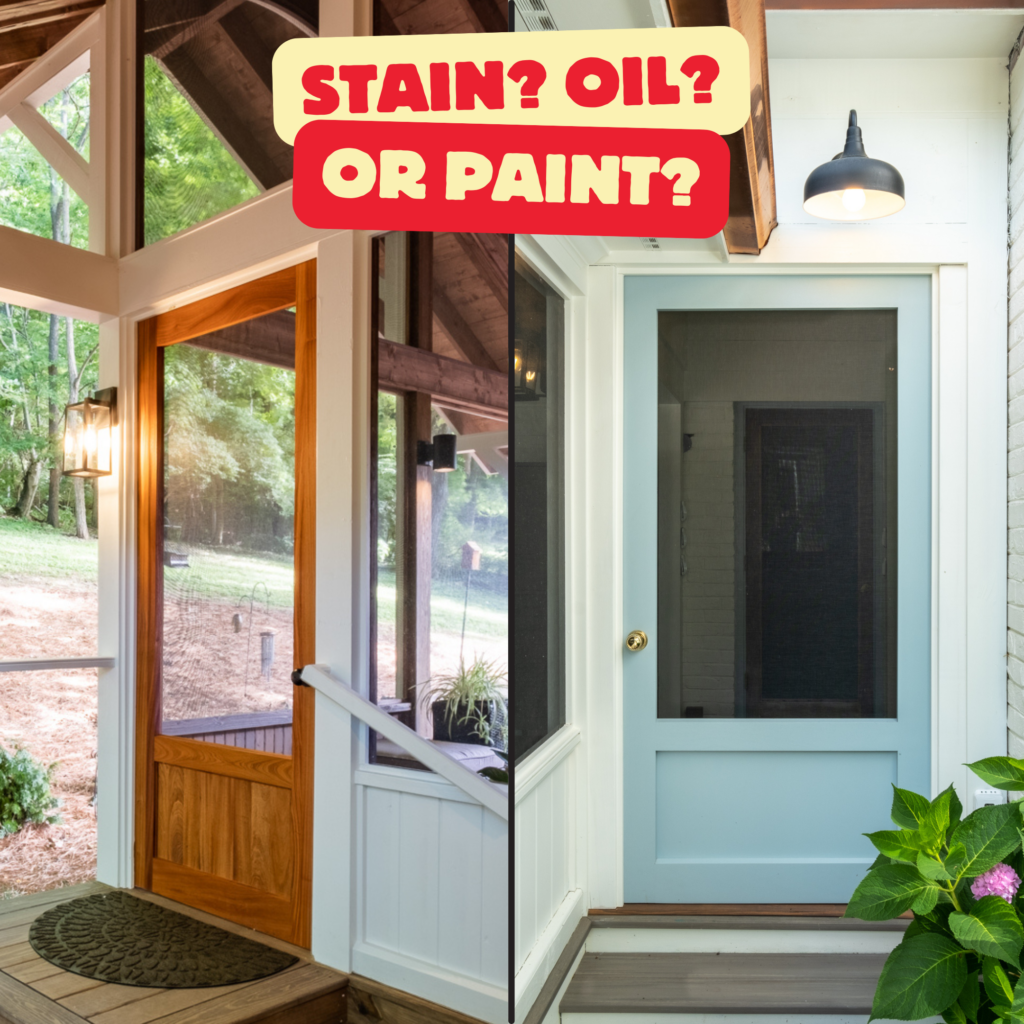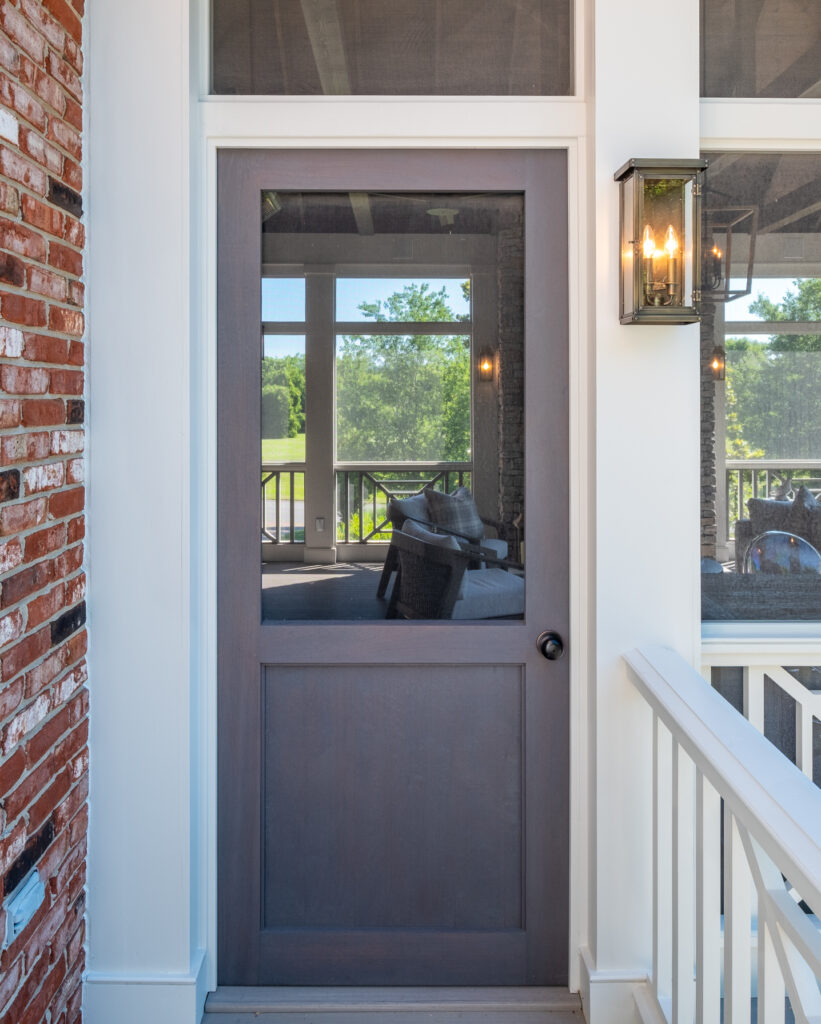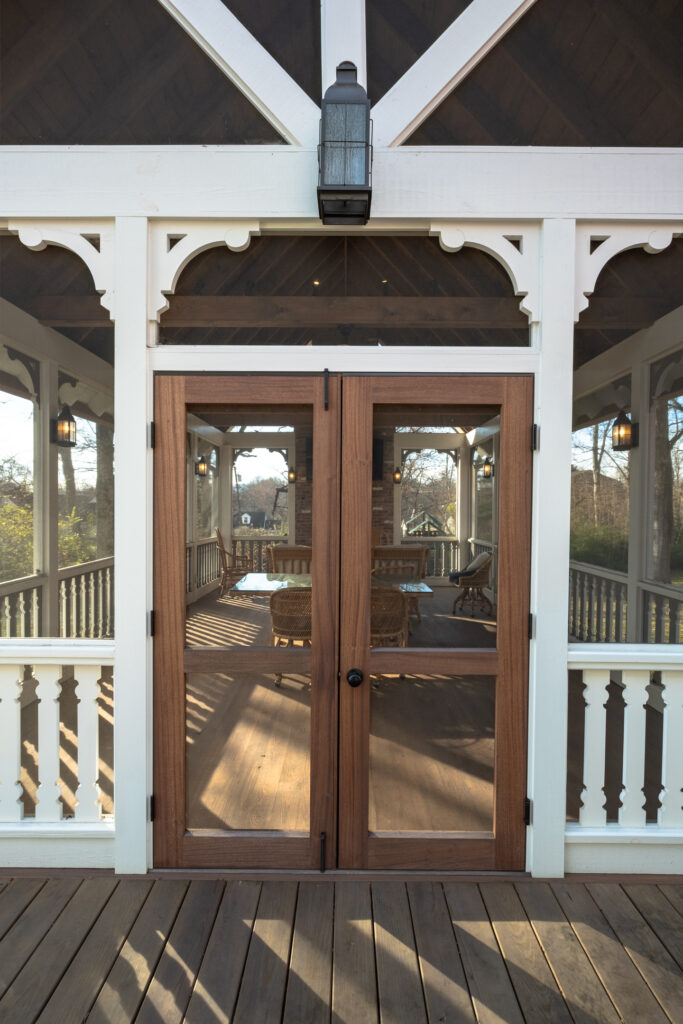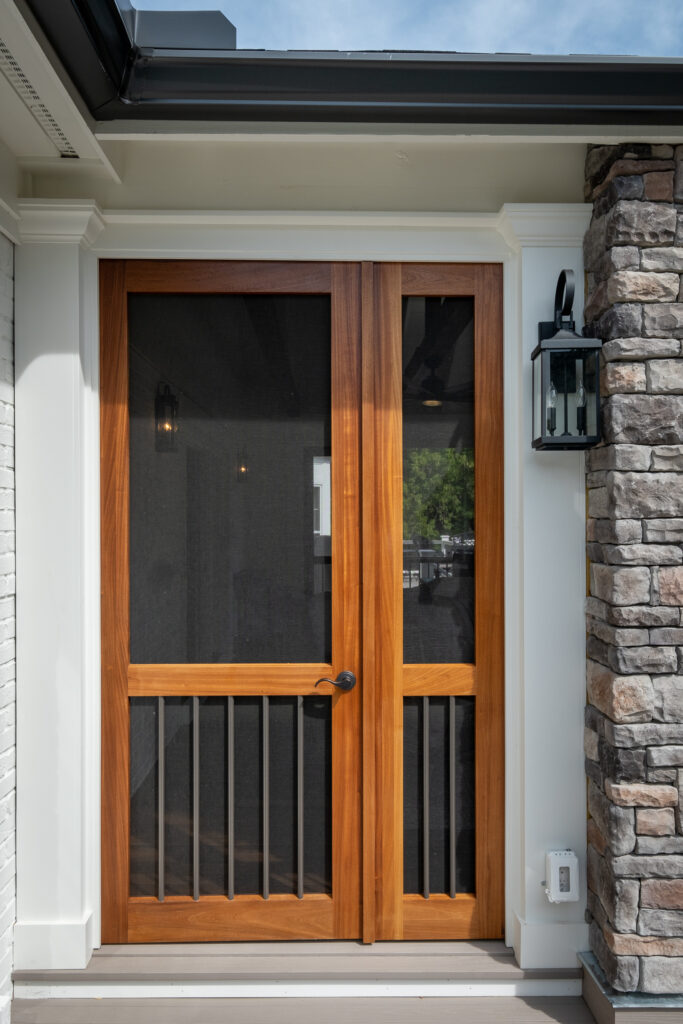 Our doors are made from Sapele, which is not only a beautiful wood (similar to Mahogany) but has all the characteristics you’d want for exterior use. However, it must be finished (with paint, stain or oil) for the following reasons:
Our doors are made from Sapele, which is not only a beautiful wood (similar to Mahogany) but has all the characteristics you’d want for exterior use. However, it must be finished (with paint, stain or oil) for the following reasons:
 1. Protection from Moisture: Sapele is naturally resistant to moisture, but prolonged exposure to rain and humidity can cause the wood to absorb water, leading to swelling, warping, or even rot over time. Staining or painting creates a protective barrier that prevents water penetration and helps maintain the wood’s structural integrity.
1. Protection from Moisture: Sapele is naturally resistant to moisture, but prolonged exposure to rain and humidity can cause the wood to absorb water, leading to swelling, warping, or even rot over time. Staining or painting creates a protective barrier that prevents water penetration and helps maintain the wood’s structural integrity.
2. UV Resistance: Direct sunlight and UV rays can cause Sapele to fade or weather, turning its rich reddish-brown color to a dull gray. Staining or applying oil helps preserve its natural beauty and prevents the wood from losing its original color.
3. Preventing Cracking and Splitting: Wood tends to expand and contract with changes in temperature and humidity. Staining or painting Sapele wood reduces the chances of these movements, minimizing the risk of cracking, splitting, or other damage caused by weather fluctuations.
4. Protection from Insects and Fungi: Though Sapele is naturally resistant to insects and fungi, outdoor exposure may increase the risk of these elements taking hold. A stain or paint layer provides an additional safeguard against pests and fungal growth.
5. Enhanced Durability: By sealing the wood with a quality stain or paint, you significantly increase the lifespan of Sapele, reducing the need for frequent maintenance and repairs.
To put it plainly, staining or painting Sapele wood when used outdoors enhances its durability, protects its aesthetic, and shields it from environmental wear.
So– what should you choose? Paint, Stain or Oil?
Choosing between stain, paint, or oil for protecting your exterior sapele screen door depends on your priorities—whether it’s maximizing protection, preserving natural beauty, or minimizing maintenance. Each option offers distinct benefits:
Stain, Paint, or Oil: How They Compare
| Aspect | Stain | Paint | Oil |
|---|---|---|---|
| Protection | Good moisture protection, moderate UV protection. | Best protection against moisture, UV, and weather. | Good moisture protection, limited UV protection. |
| Appearance | Enhances natural wood grain, adds color but shows texture. | Covers grain completely, offers more color choices. | Enhances natural beauty, rich finish, no added color. |
| Durability | Requires reapplication every 2-5 years. | Long-lasting, may require repainting after 5-10 years. | Needs reapplication every 6-12 months. |
| Ease of Maintenance | Easier than paint; no peeling or chipping. | Requires scraping and sanding when worn. | Simple reapplication, no stripping required. |
| Best for | Preserving wood’s natural look with color options. | Full color coverage and maximum weatherproofing. | Highlighting natural beauty with easy upkeep. |
Stain for Sapele
- Best for: If you want to preserve the natural beauty of the wood while adding color and some protection, stain is a great option. It enhances the natural grain of the sapele and offers solid protection against moisture, with semi-transparent or semi-solid stains adding some UV protection.
- Pros:
- Enhances natural wood grain.
- Good balance of protection and appearance.
- Doesn’t chip or peel.
- Cons:
- Requires reapplication every 2-5 years.
- Less UV protection compared to paint.
Paint for Sapele
- Best for: If your primary goal is maximum protection from the elements (moisture, UV rays, weather), paint is the best option. It creates a thick, protective barrier over the wood, but it completely covers the wood grain and natural appearance of sapele.
- Pros:
- Offers the best protection from UV rays and moisture.
- Long-lasting (up to 10 years).
- Full color customization.
- Cons:
- Hides the natural beauty and grain of sapele.
- Can chip, peel, and require more maintenance (scraping, sanding, and repainting).
Penetrating Oil for Sapele
- Best for: If you want to highlight the natural beauty of the wood while providing easy maintenance, penetrating oil is ideal. Oils penetrate the wood, nourish it from within, and maintain its rich, natural appearance, but offer less UV protection and need more frequent maintenance.
- Pros:
- Brings out natural wood grain and richness.
- No peeling or chipping.
- Easy maintenance—just reapply without extensive prep work.
- Cons:
- Limited UV protection, so the wood may gray over time.
- Requires frequent reapplication (every 6-12 months).
- Offers less protection against harsh weather compared to paint or stain.
 Which is Better for an Exterior Sapele Screen Door?
Which is Better for an Exterior Sapele Screen Door?
- If protection is your top priority: Paint is the best option. It offers the most durable and comprehensive protection against UV rays, moisture, and weathering. It will keep the door in excellent condition for longer, though it will cover the natural wood.
- If you want to maintain the natural beauty of your sapele wood while still getting decent protection, go with a stain. A semi-transparent or semi-solid stain will highlight the wood’s grain while offering more moisture and UV protection than oil.
- If natural aesthetics and ease of maintenance are your main concerns, choose penetrating oil. It will nourish the wood, bring out its natural beauty, and make maintenance easy, but you’ll need to reapply it regularly to maintain its protective qualities.
Recommendation:
For an exterior screen door, where both appearance and protection are important, stain (like Sikkens ProLuxe Cetol) strikes the best balance. It offers good moisture and UV protection while preserving the wood’s natural grain. However, if you prioritize maximum durability and aren’t concerned about hiding the wood grain, paint would offer the most comprehensive protection. If you prefer the ease of regular maintenance and want a natural finish, penetrating oil (such as Penofin Marine Oil) could be the way to go.
Ultimately, you must decide between your aesthetic preference and your desired maintenance plan. However you finish your Porch Store Screen Doors, they will be beautiful!

